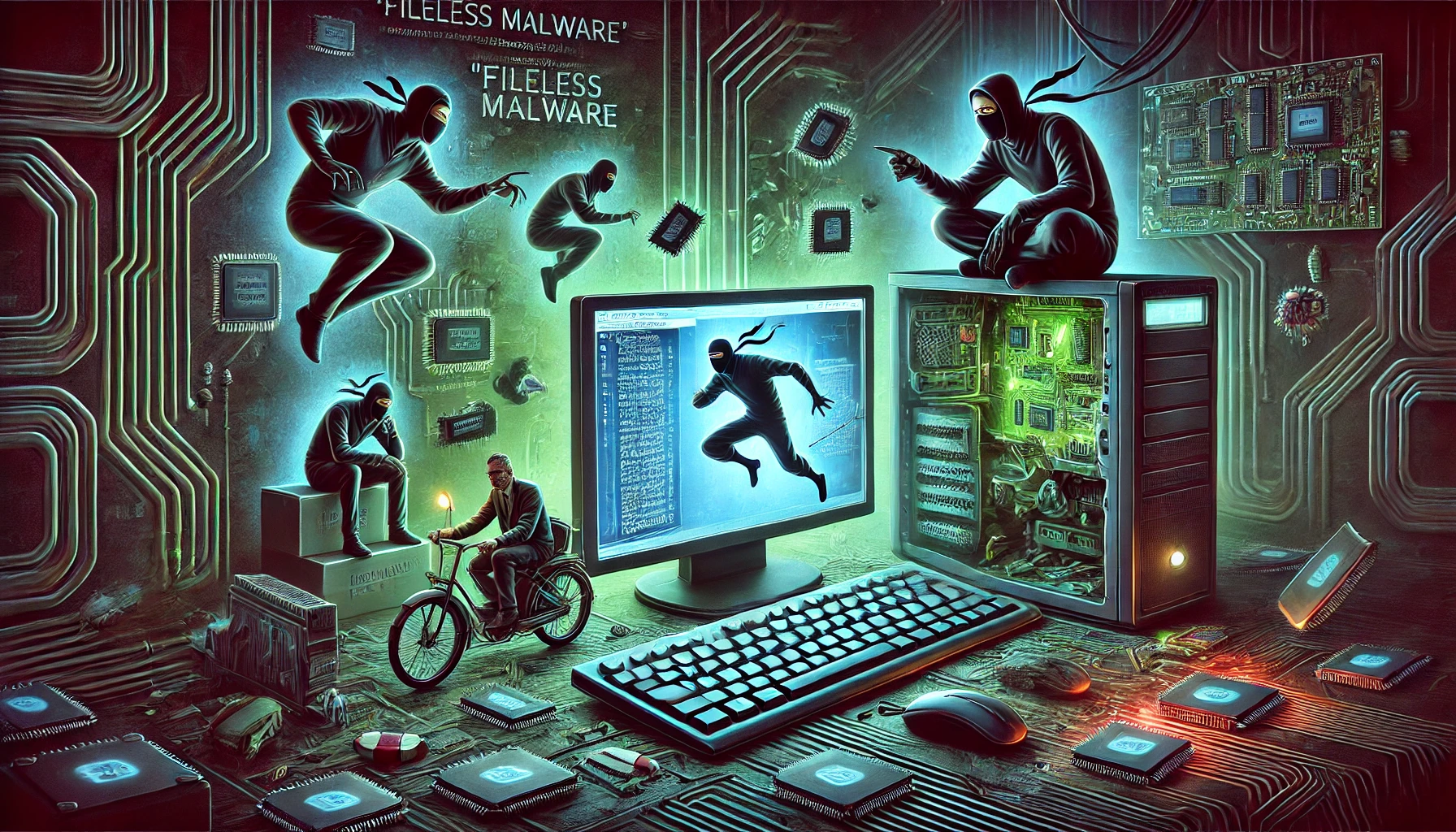The Rise of Fileless Malware: Why Your Antivirus Might Be Falling Behind

The Silent Evolution of Malware
When we think of malware, the image that probably comes to mind is a nefarious-looking file sitting quietly on your computer, waiting for the right moment to wreak havoc. You know, the classic 'open me and regret everything' kind of malware. But what if I told you that the newest breed of malware doesn’t even need a file? Enter fileless malware, the sneakiest, most elusive threat your system has ever faced. Traditional malware is like a burglar leaving their fingerprints everywhere; fileless malware is more like a ninja, leaving no trace. And the scary part is that most traditional antivirus software isn’t equipped to deal with these silent invaders.
How Fileless Malware Works: A Ninja in the Digital Shadows
Fileless malware doesn’t require the same installation process as your everyday virus. Instead of dropping a malicious file on your system, it hides in the memory, using legitimate tools already present on your computer. Think PowerShell, Windows Management Instrumentation, or even your browser. That’s right, fileless malware is like the digital version of using your own hand to slap yourself. It doesn't leave behind any physical files that an antivirus would typically scan, making it incredibly difficult to detect.
Why Traditional Antivirus Falls Short
Here’s the thing: your traditional antivirus software is like a security guard who only checks the pockets of people walking through the door. But if someone’s hiding something in plain sight, say under their hat or in their shoes, they’ll probably get away with it. Fileless malware is that sneaky trickster, blending in with normal activity so well that even the most up-to-date antivirus scanners can’t catch it. These security programs are designed to find and neutralize files, not bits of malicious code hiding in the memory or exploiting legitimate tools. And guess what? There’s no file to scan. Talk about frustrating!
The Alarming Increase in Fileless Attacks
Fileless malware has been steadily increasing in popularity, and for a good reason. Why go through the hassle of creating a detectable file when you can work behind the scenes? According to recent studies, over 40% of cyberattacks now involve some form of fileless malware. That’s a staggering number, considering this technique was virtually unheard of just a few years ago. What’s even more concerning is that these attacks are more likely to succeed, as traditional antivirus software has an abysmal detection rate for fileless threats. In fact, some reports suggest that fileless attacks are ten times more likely to succeed than file-based ones.
Real-Life Examples: When Fileless Malware Strikes
Let’s look at some real-life cases to see how devastating fileless malware can be. In 2017, WannaCry ransomware took the world by storm, but its cousin, Petya, used fileless techniques to spread even further, wreaking havoc across Europe and North America. More recently, the notorious Astaroth malware has been using fileless methods to target users in Brazil. Astaroth doesn’t need to drop any files on the victim’s computer; instead, it hijacks legitimate processes to steal sensitive information, all while flying under the radar. These attacks show just how versatile and dangerous fileless malware can be.
How to Protect Yourself: Beyond Antivirus
So, if traditional antivirus software isn’t enough, what can you do to protect yourself? First, let’s be clear: antivirus software still plays a crucial role in your overall security strategy. It’s not obsolete; it’s just not the one-size-fits-all solution anymore. To defend against fileless malware, you’ll need to adopt a more layered approach. Endpoint detection and response (EDR) tools are designed to detect suspicious behavior rather than just scanning for files. These tools can monitor activities like unusual memory usage or processes running in the background, giving you a fighting chance against fileless threats.
Best Practices for Staying Safe
Beyond using EDR tools, there are a few best practices you can follow to stay safe. First, always keep your software up to date. Fileless malware often exploits vulnerabilities in outdated software, so staying current is one of the easiest ways to protect yourself. Next, disable or restrict the use of tools like PowerShell and Windows Management Instrumentation, which are frequently used by fileless malware. Lastly, be cautious of phishing attempts. Many fileless attacks begin with a phishing email designed to trick you into clicking a malicious link.
The Future of Cybersecurity: What's Next?
Fileless malware is just one of many evolving threats in the world of cybersecurity. As attackers become more sophisticated, it’s likely that we’ll see even more advanced techniques that can bypass traditional defenses. That’s why it’s essential to stay informed about the latest threats and to invest in more comprehensive security solutions. The future of cybersecurity will likely focus on behavior-based detection, artificial intelligence, and machine learning to stay one step ahead of attackers. But for now, fileless malware is a wake-up call to anyone still relying solely on traditional antivirus software.
Are You Ready for the Next Wave of Cyber Threats?
So, now that you know the ins and outs of fileless malware, the real question is: are you ready to upgrade your defenses? As cybercriminals continue to find new ways to slip under the radar, it’s crucial to stay vigilant and invest in tools that go beyond traditional antivirus. After all, the last thing you want is to fall victim to a threat that doesn’t even leave a trace. How prepared are you for the next wave of fileless attacks?



